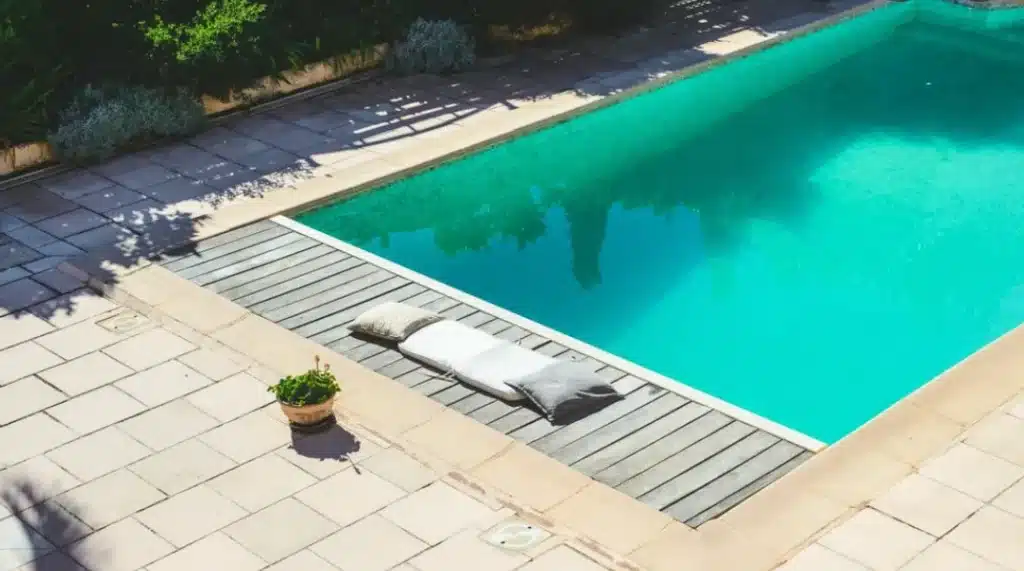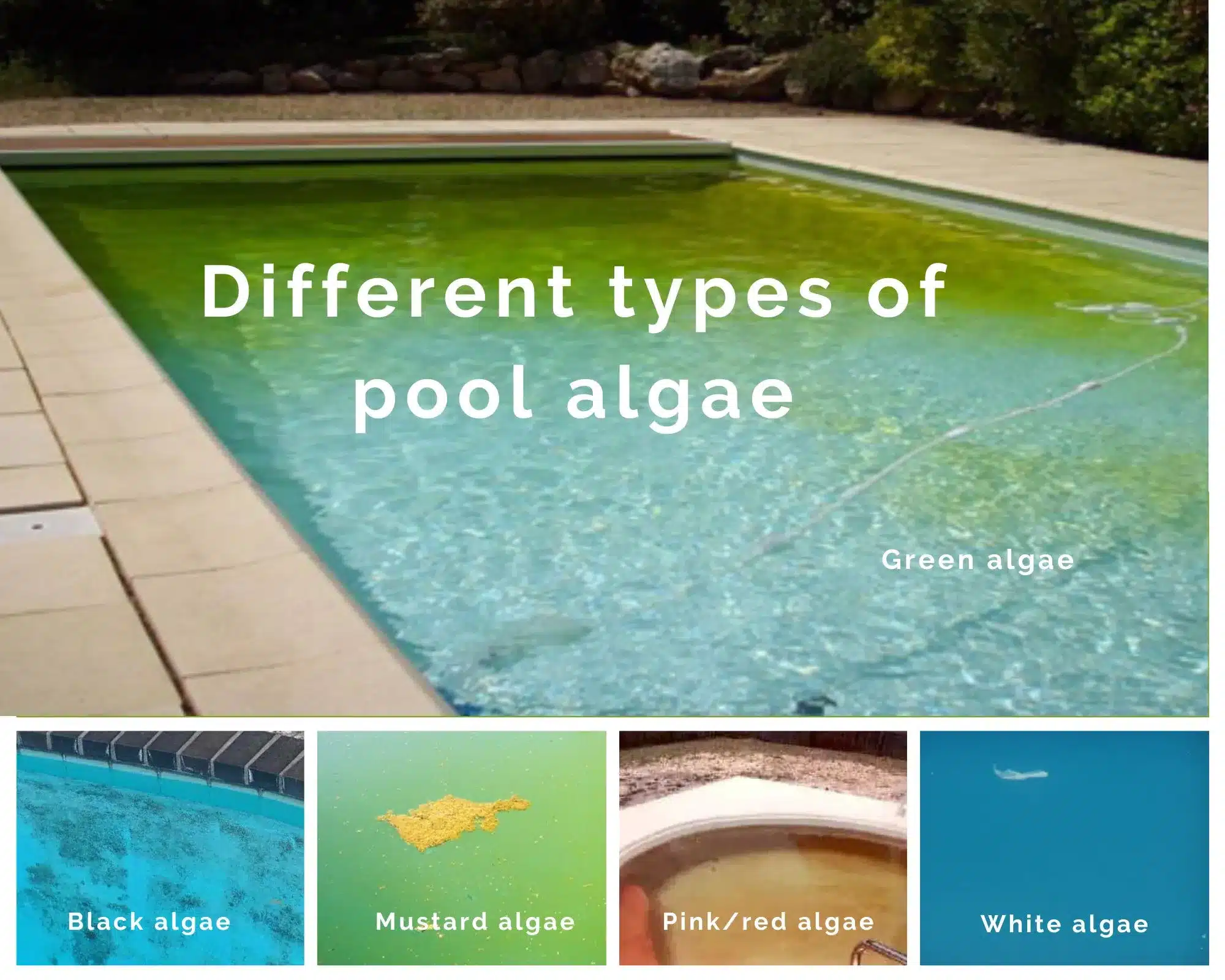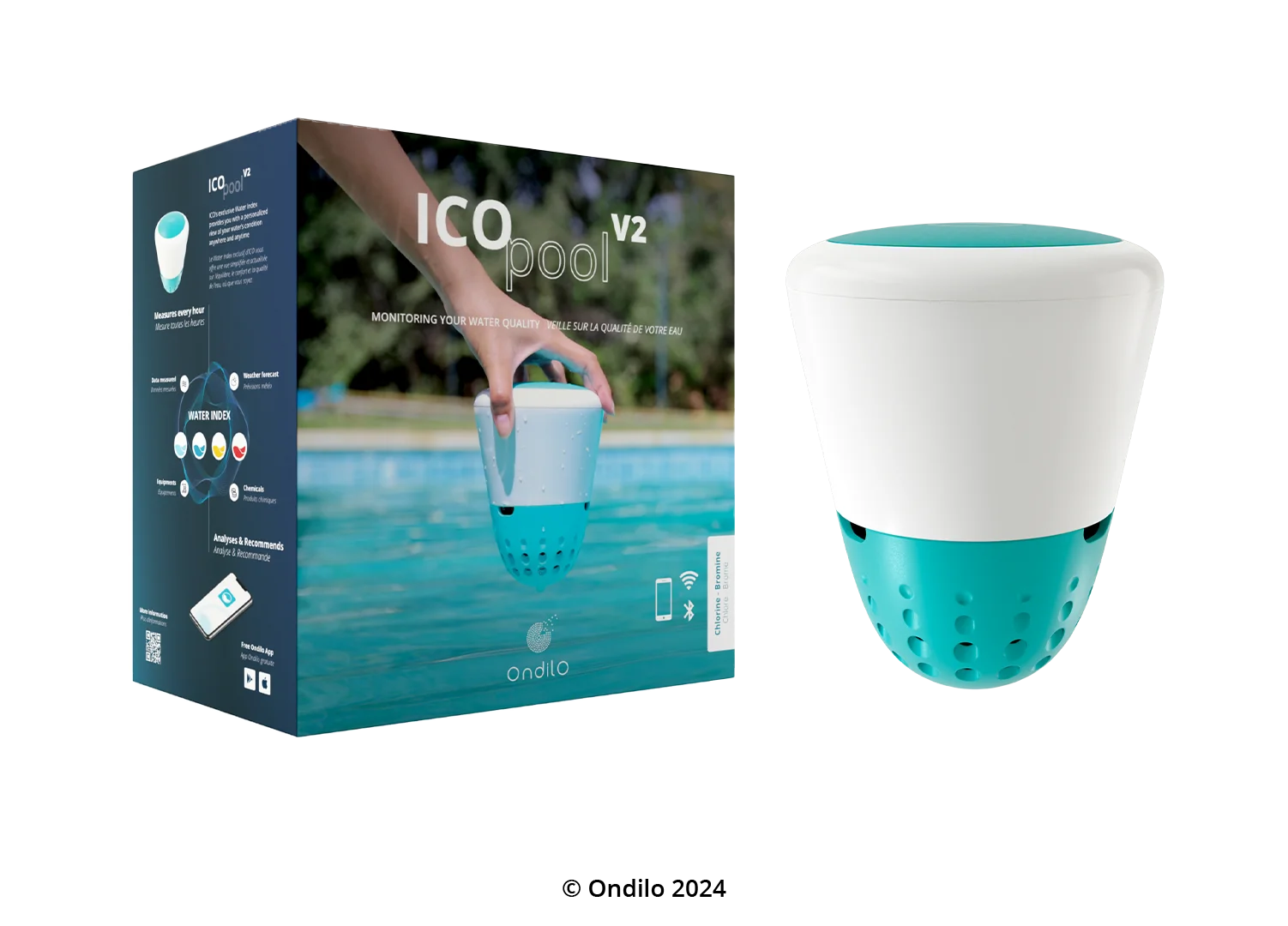What to do when your pool water changes color? This problem is generally caused by the appearance of algae. It's important to identify and get rid of algae quickly, as it encourages bacterial proliferation in the water and pollutes it. Find out more about the causes of algae growth, and our tips for treating and cleaning your pool according to the type of algae.

Algae like everything in our pools: humidity, heat and light! Heavy algae growth leads to discoloration of the water and deposits on the walls and bottom of the pool. Here are the various causes of algae growth.
The appearance of algae during this period is frequent, especially if you have practiced passive wintering (total cessation of filtration and treatments) or active wintering with light filtration.
As soon as the water temperature reaches 12°C, don't delay estimate your pool even if you won't be enjoying it for several weeks. Lack of proper treatment, combined with rising temperatures and humidity, inevitably leads to the appearance of algae.
When bathing water is insufficiently or incorrectly treated, the pH of the water becomes unbalanced and the disinfectant no longer has sufficient effect. To measure pH, use a reliable and accurate tester. When the pH is too high and the chlorine level too low, algae grow rapidly.
With summer heat waves, or even heat waves, water temperatures that are too high encourage the growth of algae. In fact, as soon as the water rises above 28°C, algae multiply and feed bacteria : the pool water becomes green. .
Water circulation in the pool is too weak. In summer, it's necessary to adjust the filtration time to stabilize the water temperature.
If your pool isn't maintained regularly and rigorously, the filter and pipes can become clogged. This can contribute to the development of algae. Here are some tips to clean well your pool.
There are thousands of species of algae. However, you need to know how to distinguish between them in order to apply the right chemical treatment. To do this, look out for two things in particular:

These are the most common. Pool water turns green and stains may appear on the bottom and sides of your pool, making it slippery and slimy to the touch. Green algae can sometimes be suspended in the water.
These appear as black, slimy stains on the walls and bottom of pools, as well as on the joints of your pool's tiles. They are particularly resistant to chemical treatments, especially chlorine. They are the most difficult to get rid of.
As their name suggests, they are yellowish in color and also settle on the bottom and sides in powder form. They are easy to remove. However, unlike other algae, they prefer shady areas to grow. The germ comes from the Sahara, clinging to dust carried by the wind. Regions with southerly winds are therefore often affected by mustard algae. They disperse into the water at the slightest movement, and are easier to spot at the start of the day.
Bright red or pink in color, these algae usually develop on plastic parts, such as skimmer baskets, liners, skimmers .... The water then turns brown.
White algae multiply mainly in shady areas of the pool. Resembling moss or absorbent cotton, it easily separates from the walls. White algae should be distinguished from algae that has died as a result of shock treatment, which can cause milky water.
Above all, the presence of algae on your pool's lining indicates the presence of several types of bacteria. Some are dangerous to the health of swimmers! You need to intervene quickly. And remember that each type of algae requires its own specific treatment. That's why it's so important to identify them correctly, as described in the previous paragraph.
The dosages and conditions of use of the products listed below must be scrupulously respected in accordance with the manufacturers' instructions.
A few daily actions can limit the development of algae.
Regular analysis of your pool water (pH, disinfectant and/or disinfection, water temperature) using precise, reliable measuring systems is essential to prevent the appearance of algae.
Did you know there are water connected analyser such as ICO who makes automated measures of your pool water ?

Did you know that the weather has an impact on the quality of your pool water? During the summer, weekly maintenance of your pool helps maintain balanced, healthy water. Regularly clean the sides and bottom of your pool, as well as the filter and skimmers....
During the season, remember to clean it regularly, about once a week. In hot weather, it's advisable to turn on the filtration system at night. Here's a simple rule of thumb for calculating how long to filter your pool water: Filtration time = water temperature divided by two. For example, if your pool is at 28°C, the optimum filtration time will be 14 hours per day.
You now have all the information you need to prevent the appearance of algae in your pool, or to know how to treat it should it reappear. If you have any doubts or questions, don't hesitate to call on a qualified professional to help you.
| Cookie | Duration | Description |
|---|---|---|
| cookielawinfo-checkbox-analytics | 11 months | This cookie is set by GDPR Cookie Consent plugin. The cookie is used to store the user consent for the cookies in the category "Analytics". |
| cookielawinfo-checkbox-functional | 11 months | The cookie is set by GDPR cookie consent to record the user consent for the cookies in the category "Functional". |
| cookielawinfo-checkbox-necessary | 11 months | This cookie is set by GDPR Cookie Consent plugin. The cookies is used to store the user consent for the cookies in the category "Necessary". |
| cookielawinfo-checkbox-others | 11 months | This cookie is set by GDPR Cookie Consent plugin. The cookie is used to store the user consent for the cookies in the category "Other. |
| cookielawinfo-checkbox-performance | 11 months | This cookie is set by GDPR Cookie Consent plugin. The cookie is used to store the user consent for the cookies in the category "Performance". |
| viewed_cookie_policy | 11 months | The cookie is set by the GDPR Cookie Consent plugin and is used to store whether or not user has consented to the use of cookies. It does not store any personal data. |